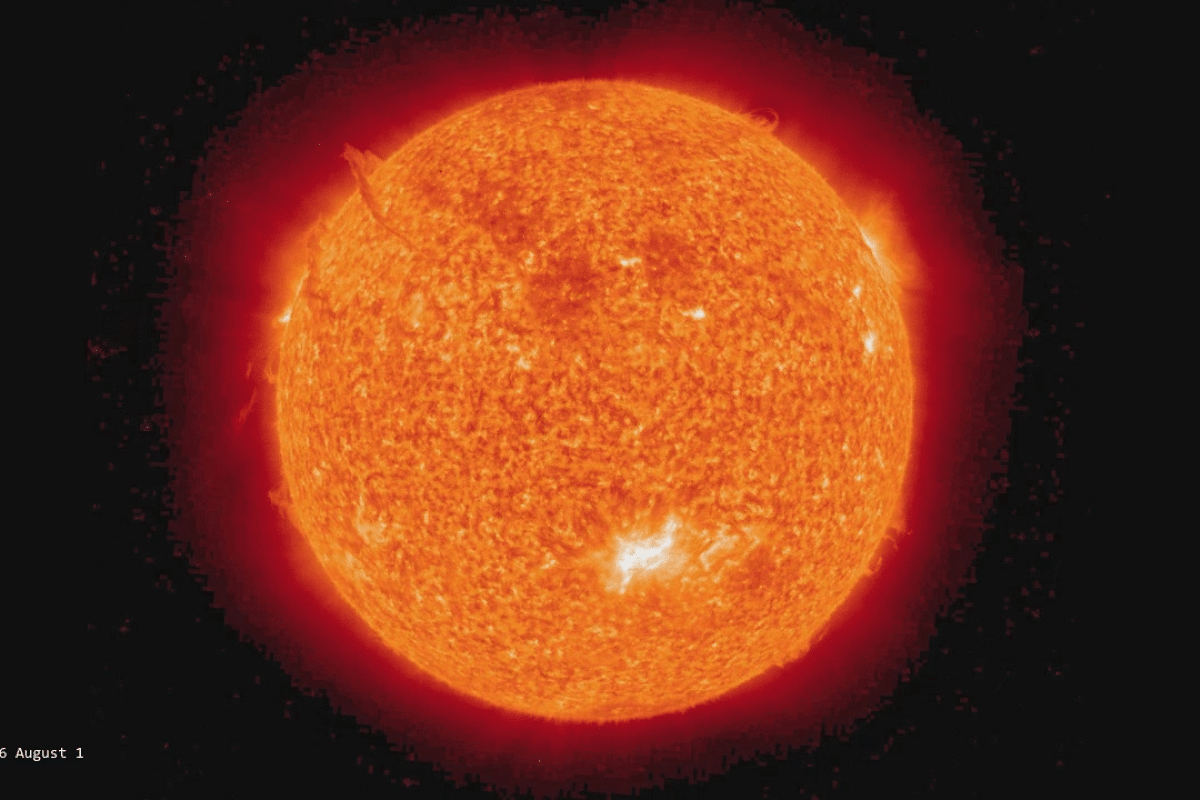Science
“One-Two Punch”: Two Solar Storms Predicted To Strike Earth
- The Earth arrival of the twin solar storms was predicted to be on 19 July and 21 July (UTC). Here's what to know and expect.

Solar storm from 1 August 2010 (Photo: NASA Goddard Space Flight Center from Greenbelt, MD, USA/Wikimedia Commons)
The Sun’s been turning up and the Earth is feeling the heat.
Two eruptions from the main character of our solar system on 15 July and 16 July have led to two Earth-directed solar storms.
In her 18 July solar storm forecast, space weather physicist Dr Tamitha Mulligan Skov said, “Both of these storms are now on their way to Earth and it looks like we’re going to get a one-two punch."
Going by the predictions, the first storm was to arrive by the midnight of 19 July and the second one in early morning (6am) on 20 July. (The days specified are as per UTC [coordinated universal time], which is five and a half hours behind India time [IST].)
The first predicted storm, as it turns out, has been more than merely punctual. The Center of Excellence in Space Sciences India (CESSI), Kolkata, tweeted that the CME (coronal mass ejection of 15 July) “seems to have arrived a bit earlier than expected..."
A solar physicist, who goes by the name “Halo CME” on Twitter, estimated the arrival time of the shock wave to be around 20:30 UTC on 18 July, hours before the predicted time.
Besides the 19 July arrival, CESSI had estimated shock wave “speeds ranging between 404-508 km/s” a couple of days ago. This range held up.
And as for the effects of the storm, “Minor geomagnetic storms may ensue but no major perturbations are expected,” CESSI said in a tweet.
Great aurora sightings and captures are expected as a result of these solar storms. Dr Skov, who is affectionately known as “Space Weather Woman,” has urged aurora photographers to “keep your batteries charged and cameras at the ready.”
Radio blackouts are predicted too. The strong solar flares over the past week are likely to sporadically trouble GPS (global positioning system) navigation and traffic services, satellite-based communications, and ham radio operations.
Dr Skov’s advice for GPS users: “…stay vigilant as the high solar flux and radio blackouts make GPS reception a bit dicey, especially near dawn and dusk. Also, once the solar storms hit, GPS users should stay away from aurora on Earth's nightside.”
As of writing this, the Space Weather Woman has already retweeted aurora captures from Canada and the United States (US) that confirm the storm predictions.
Auroras are beautiful displays of light in the sky caused by the interaction of particles from a solar storm with the gases in the Earth’s atmosphere. Particular gases give off particular lights. For instance, oxygen gives off green and red light and nitrogen glows blue and purple. It creates an enchanting light show up in the sky.
The three-day forecast prepared by the US Department of Commerce, National Oceanic and Atmospheric Administration (NOAA), Space Weather Prediction Center (SWPC), talks about a 21 July Earth strike.
“A slow-moving CME that left the Sun on 15 Jul is expected to arrive at Earth on 21 Jul, making G1 (Minor) geomagnetic storming likely.”
This scale rises in strength of storming from G1 to G5.
The predicted G1 (minor) geomagnetic storming for 21 July presents the possibility of weak power grid fluctuations, minor impact on satellite operations, and appearance of aurora at high latitudes.
Not in this case, but when the storming is more intense, it can have positive effects like the mopping up of space debris. (Space debris is a major concern.) So, the effects are not all bad.
On the likelihood of radio blackouts, the SWPC forecast said, “There is a chance for (R1-R2, Minor-Moderate radio blackouts) and a slight chance for (R3 Strong or greater radio blackouts) through 21 Jul.”
Solar storms are typically nothing to worry about (unless you are shipped back in time to September 1859 or March 1989 along with the technology of today). The occurrence of geomagnetic storms are linked to the solar cycle, which lasts for about 11 years.
The likelihood of a major storm striking Earth rises up to match the peak of the cycle. The cycle we are now in began in December 2019 and apparently “we’re near the peak of the current cycle now,” called "Solar cycle 25."
According to the NOAA, however, the peak of this cycle will be in this very month but three years later, in 2025 (give or take eight months, though).
In February this year, SpaceX lost 40 of 49 satellites to a solar storm. The satellites fell from orbit and burned up.
(NASA FAQs on solar storm and space weather)
Support Swarajya's 50 Ground Reports Project & Sponsor A Story
Every general election Swarajya does a 50 ground reports project.
Aimed only at serious readers and those who appreciate the nuances of political undercurrents, the project provides a sense of India's electoral landscape. As you know, these reports are produced after considerable investment of travel, time and effort on the ground.
This time too we've kicked off the project in style and have covered over 30 constituencies already. If you're someone who appreciates such work and have enjoyed our coverage please consider sponsoring a ground report for just Rs 2999 to Rs 19,999 - it goes a long way in helping us produce more quality reportage.
You can also back this project by becoming a subscriber for as little as Rs 999 - so do click on this links and choose a plan that suits you and back us.
Click below to contribute.
Latest